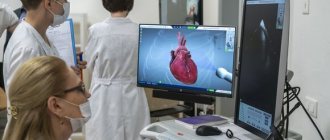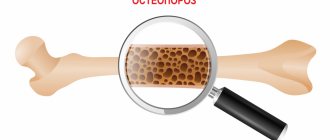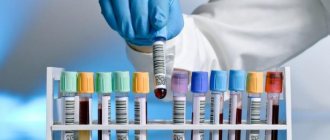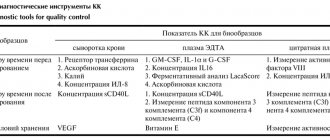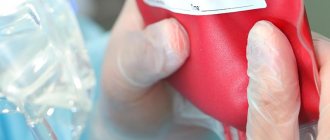Indications for the study
It is recommended to take a blood test for phosphorus in the following cases:
- various pathologies of bone tissue;
- dysfunction of the parathyroid glands;
- chronic kidney problems;
- abnormal vitamin D levels.
If deviations from the norm are minor, clinical manifestations are usually absent. To obtain a more complete picture of the patient's condition, phosphorus and calcium levels are usually determined simultaneously. The results of these two analyzes make it possible to reliably assess the state of mineral metabolism.
It is also recommended to undergo examination if you have the following symptoms:
- muscle spasms or weakness;
- fatigue, constant fatigue;
- repeated fractures with minor impact on the bones.
Increased phosphorus: causes and signs
Pathology of the parathyroid glands is the cause of hyperphosphatemia
The most common cause of hyperphosphatemia is insufficient excretion of the element from the body. Pathology occurs as a result of acute or chronic renal failure, when the ability of the renal glomeruli to filter is reduced.
Reduced phosphorus excretion can be a consequence of not only kidney disease, but also damage to the parathyroid glands. In this case, the cause of hyperphosphatemia is insufficient production of parathyroid hormone, which regulates the level of P in the blood.
Diabetic ketoacidosis contributes to an increase in P concentration in the blood. In this case, the total amount of P in the body drops below normal, and phosphorus compounds move from cells to the extracellular space.
Diabetic ketoacidosis contributes to hyperphosphatemia
Another factor of excess phosphorus is an overdose of P-based drugs and abuse of enemas containing phosphates. In infants, an excessive increase in phosphorus levels is accompanied by replacing breast milk with cow's milk, since cow's milk has a high P content and kidney function is not yet sufficiently developed.
Symptoms are rarely observed at the initial stage; subsequently, hypocalcemia, which develops against the background of a high level of P, is manifested by convulsions, numbness, destruction of tooth enamel and disorders in bone tissue (pain in the bones, frequent fractures), and abnormal heart rhythms.
In children, the musculoskeletal system develops incorrectly.
General information
Phosphorus is required by the body for tissue formation. In addition, this macronutrient is required for the normal functioning of many metabolic processes. The macroelement is found in many foods and is absorbed from them into the gastrointestinal tract. It is present in the body in various compounds. Most of the macroelement is combined with calcium and is part of bone tissue. Approximately 1% of the total macronutrient normally circulates in the bloodstream.
The cause of phosphorus deficiency may be a violation of its absorption mechanisms, kidney dysfunction, poor nutrition, etc. Excessive accumulation of this macroelement in the body is most often associated with kidney pathologies, lack of calcium or its excess in the daily diet.
A slight decrease in the amount of a macronutrient, as a rule, does not lead to the appearance of any symptoms. A significant deficiency can be suspected if the patient experiences symptoms such as confusion and muscle weakness. An excess of a macroelement is characterized by convulsions, possibly muscle numbness or loss of consciousness. The metabolism of phosphorus and calcium is closely related.
Low phosphorus: causes and signs
Alcohol intake impairs phosphorus absorption
The development of hypophosphatemia is caused by insufficient levels of elements necessary for the absorption of P. For example, a deficiency in protein in the diet is accompanied by a decrease in the level of P in the blood. Constant consumption of alcohol provokes the development of chronic R deficiency. Microelement malabsorption occurs in various malabsorption syndromes.
Increased loss of P in the urine is the result of diseases of the endocrine system, when the synthesis of parathyroid hormone exceeds the physiological need. Another reason is excessive dosage of diuretics.
A decrease in P concentration in the blood is accompanied by a disturbance in the acid-base balance, when alkali compounds accumulate in the body. An excess of certain elements leads to the development of phosphorus deficiency, primarily calcium, as well as aluminum and magnesium.
Muscle weakness may be a sign of hypophosphatemia
The movement of P compounds from the extracellular space into cells occurs during intensive treatment of diabetic ketoacidosis, resumption of normal nutrition after prolonged malnutrition, recovery after removal of the parathyroid glands, and respiratory alkalosis.
Acute hypophosphatemia occurs with alcohol intoxication, extensive burns, increased ventilation of the lungs, and in the postoperative period.
A mild form of P deficiency usually does not manifest itself clinically; with a significant decrease in P concentration in the blood, muscle weakness, bone pain, and convulsions are felt. Symptoms of liver dysfunction, pathological fractures, softening and deformation of skeletal bones are observed.
Interpretation of results
In patients over 12 years of age, the macronutrient level should be in the range of 0.81-1.45 mmol per liter. For children of different age groups, their own reference values have been established. To correctly interpret the results, establish an accurate diagnosis and prescribe treatment, you must consult a doctor. The test is not intended for self-diagnosis.
Decreased macronutrient levels
there may be various reasons. These include, for example, uncontrolled use of a number of drugs, hypothyroidism, rickets, hyperparathyroidism, malnutrition, hypokalemia, and alcoholism. Decreased rates are also observed in patients with severe burns.
For children, the macronutrient norm is higher than for adults. Until the age of 12, maintaining its normal level is especially important. A deficiency can cause brittle bones and short stature.
Excess phosphorus
can be caused by kidney and liver diseases and a number of other pathologies. Over time, excess phosphates can be deposited in tissues, causing damage to internal organs.
It must be taken into account that eating food within 2-3 hours before taking blood leads to falsely low results. During the day, the concentration of macroelements in the blood is subject to fluctuations (in the evening it increases). In addition, phosphorus levels are affected by many medications. Therefore, the doctor who will interpret the test results must be informed about the use of medications prescribed by other specialists.
What are the dangers of deviations from the norm?
Significant fluctuations in phosphorus are the cause of vascular accidents
With an excessive concentration of P in the body, metabolism is disrupted, the most common consequence is the leaching of calcium from the bones. Damage to bone tissue is accompanied by tooth destruction and frequent bone fractures. In this case, calcium moves into the bloodstream, which leads to the formation of calcium deposits in the vessels. This condition provokes the development of cardiovascular pathology, in particular, coronary heart disease and heart failure.
The consequences of hyperphosphatemia are damage to the intestines and liver, and deposition of stones in the kidneys. Characterized by a decrease in the number of leukocytes and the development of anemia. The body's protective functions decrease, cases of infectious diseases become more frequent, and spontaneous hemorrhages may occur. An increase in P levels in the blood increases the risk of heart attack and death from cardiovascular pathologies.
Impaired sensitivity - consequences of phosphorus deviations
Hypophosphatemia in infants leads to the formation of rickets, a disruption of bone growth processes. The immune system, both in children and adults, is not able to provide full protection of the body, since the functions of leukocytes are impaired. Efficiency and concentration decrease, the nervous system undergoes changes - apathy alternates with increased excitability and irritability. There may be a decrease in sensitivity to the point of numbness of the skin or excessive sensitivity to cold or touching the skin.
The process of muscle contraction, including the heart muscle, is disrupted. There is a negative impact of phosphorus deficiency on the overall metabolism of the body and acid-base balance.
In severe forms of phosphorus deficiency, brain damage occurs, which can lead to coma and death.
Correction of phosphorus levels: diet and medication correction
If such signs are detected, a study is recommended
When correcting the P level, the cause of the pathology is first identified in order to eliminate it. During therapy, regular monitoring of P and calcium levels in the blood is performed.
With hyperphosphatemia, the consumption of food containing a high concentration of P is limited: dairy, meat, fish products. Drugs that bind P compounds are prescribed. The choice of drug depends on the concomitant disease and condition of the patient. Effective aluminum-based preparations are used with extreme caution in cases of renal failure or are replaced with calcium acetate and carbonate. If there is a risk of developing hypercalcemia, calcium-free products are used, for example, allylamine hydrochloride polymer. A course of diuretics is prescribed for normal renal function, and dialysis for end-stage renal failure.
For hypophosphatemia, foods rich in P are introduced into the diet: tuna, salmon, sardines, shrimp, crabs, milk and dairy products, chicken eggs, pork and beef, mushrooms, pumpkin seeds, legumes, nuts. The prescription of drug treatment depends on the level of P in the blood, the duration of the deficiency and the cause of its formation. Products containing P, sodium and potassium are often prescribed. All medications that contain elements that bind compounds P, as well as diuretics, are discontinued. If the factor causing P deficiency is a lack of vitamin D, drugs based on it are used.
Normalization
How to restore the component level? In case of severe deviations, it is necessary to take medications prescribed by a doctor based on tests. In general, every person needs to consume foods rich in phosphorus. The mineral is better absorbed from plant foods. They are rich in bran, wheat sprouts, pumpkin and sunflower seeds, nuts, cashews, almonds, and yeast. Phosphorus is found in liver, eggs, cheese, red fish - trout, salmon, pink salmon.
It should be taken into account that a lot of phosphorus is present in sausages, carbonated drinks, and ice cream. If a person constantly eats such foods, there will be an excess of the mineral in large quantities. This is dangerous, so it is important to maintain a healthy and proper diet.
If an increase or decrease in phosphorus is associated with illnesses, then treatment of these diseases is required. Contact with phosphate fertilizers has a negative effect. If the level of this component changes, its use should be stopped.
Prevention of deviations from the norm
A balanced diet is a component of prevention
The level of P in the body depends on a number of elements, especially calcium. To achieve the optimal concentration of P, it is recommended to maintain a phosphorus-calcium ratio in food products of 1.5: 1. A necessary component for maintaining normal phosphorus concentration is vitamin D. At the same time, an overdose of vitamin has the same negative effect on the P content as its deficiency. Consuming a balanced amount of protein, fat and carbohydrates is integral to optimizing your body's phosphorus levels.
Prevention includes timely detection and treatment of diseases leading to deviations in P levels. First of all, changes in the number of phosphorus compounds are affected by pathologies of the kidneys and thyroid gland.
Diagnostics
Since the leading cause of hyperphosphatemia is terminal chronic renal failure, patients with this electrolyte disorder are most often under the supervision of nephrologists. During a general examination of the patient, attention is paid to traces of scratching on the skin, the presence of subcutaneous nodes that are hard on palpation, and identification of signs of hidden tetany - Trousseau and Chvostek symptoms.
Help in recognizing this condition is provided by anamnestic information - diagnosed chronic renal failure, surgery on the thyroid or parathyroid glands. The level of phosphorus is examined in the serum using a biochemical analysis. Differential diagnosis is carried out to establish the etiological factor. For this, as well as to confirm the diagnosis, the following examination is prescribed:
- Laboratory research
. In a biochemical blood test, an increase in the concentration of urea and creatinine is often noted, and almost always a decrease in the level of ionized calcium; less often, a shift in pH to the acidic side. For kidney diseases, the glomerular filtration rate is calculated. - Screening for primary hypoparathyroidism.
In patients, a decrease in the content of parathyroid hormone is detected in the blood, and increased excretion of calcium in the urine. Ultrasound reveals atrophy or absence of the parathyroid glands. Testing for genetic forms of hypoparathyroidism may be needed. - Densitometry.
Osteodensitometry (DEXA) shows a decrease in bone mineral density (T-score from -1.0 and below). - Echography.
Ultrasound of the kidneys in some patients reveals stones in the renal pelvis. Ultrasound of the periarticular tissues shows calcifications. - CT scan.
CT scans of the brain can sometimes visualize calcifications in the basal ganglia. - ECG.
With severe hypocalcemia, the electrocardiogram reveals a prolongation of the QT interval and tachycardia of the “pirouette” type.
Ultrasound of the parathyroid glands
Submission of analysis
Diagnosis can be performed using a simple method, thanks to blood sampling. The analysis allows us to determine the content of inorganic phosphorus. It is measured throughout the day under the influence of certain factors, so to obtain accurate information you need to follow simple tips.
Blood is taken in the morning - from 8 to 11 o'clock, on an empty stomach. Food intake should be limited 8 hours before the tests; you should not have a large dinner before this, and also do not eat heavy, difficult-to-digest foods. You just need to drink plain water.
Blood is taken from a vein, and in small children it is taken from the heel. The test must be performed by a doctor. It is possible to perform a blood test for other indicators to get a clear picture.
Functions
Phosphorus is a chemical component that has properties similar to semimetals. It is able to interact with other substances in the body. Phosphorus can act as an oxidizing agent and as a reducing agent. With its help, the proper functioning of the entire body is ensured, optimal metabolism and balance of all systems and internal processes are maintained.
This component is especially abundant in the brain, muscles, teeth and bones. There is inorganic phosphorus in the blood. If it is not there, then a person cannot move, think, or breathe freely. The functions of the component include:
- formation of healthy teeth and bone tissue;
- full functioning of the heart and kidneys;
- transmission of nerve impulses, which is important for the nervous system;
- participation in growth, cell division, storage and reproduction of genetic information;
- participation in muscle function;
- influence on the accumulation and release of energy from cells;
- release of glucose from products through oxidation in chemical reactions;
- a necessity for strong physical, mental and psycho-emotional activity.
Test for phosphorus in the blood: indications and preparation
Kidney pathology - indication for analysis
Analysis is prescribed in the following cases:
- bone diseases;
- pathologies of the parathyroid glands;
- hypo- and hypercalcemia;
- kidney disease;
- violation of acid-base balance.
Preparation rules.
- The day before the study, you should stop taking alcohol and drugs containing R.
- Excessive physical activity is limited during the day.
- The last meal should be completed 8-10 hours before the blood sample is taken.
- Before taking the test, you can drink only clean, still water.
Low content
Often, a decrease in phosphate in the blood occurs even with sufficient dietary intake. A reduced content of this mineral is considered dangerous. This phenomenon is associated with:
- metabolic disorders;
- dysfunction of the excretory system;
- various poisonings, including from harmful foods and drinks;
- dysfunction of the parathyroid gland.
Symptoms of P deficiency usually manifest as abnormalities in the muscular and nervous systems. Appears:
- muscle cramps, bone pain;
- changes in skin sensations;
- heart and lung failure;
- anxiety, irritability, apathy;
- loss of appetite.
With a prolonged lack of phosphorus, a dangerous disease appears - hypophosphatemia. Then it is likely that the symptoms will worsen and the following will appear:
- vomiting, diarrhea;
- bleeding gums, softening of bones, their fragility;
- abnormalities in the central nervous system;
- heart failure.
Danger
The causes and consequences of increased phosphorus in the blood are interrelated. A high content of this component leads to complications. If there is no appropriate treatment, this phenomenon can lead to:
- severe liver dysfunction - nausea and bitterness in the mouth;
- anemia with iron deficiency;
- vascular atherosclerosis;
- external and internal bleeding;
- bowel cancer.
With timely examination by a doctor and quality treatment, these consequences can be avoided. The reasons for increased phosphorus in the blood of a child and an adult are the same. The analysis is also performed according to the same rules.
